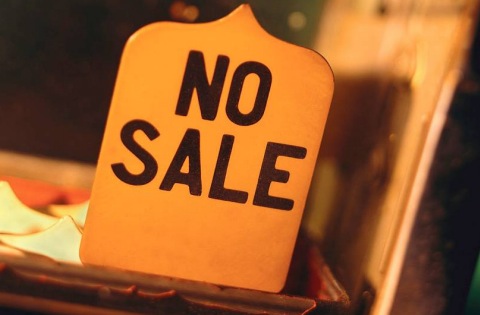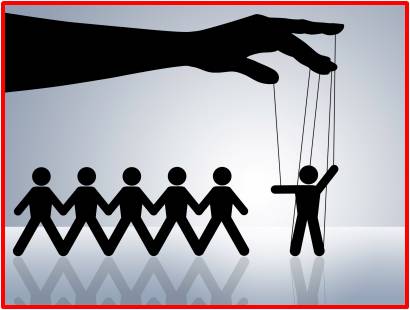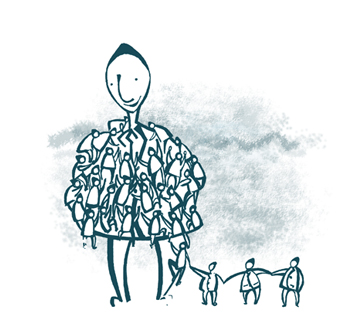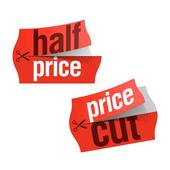01 Nov 2013
3 Signs You Are About To Lose The Sale
 Like most of you, I get cold calls and e-mails every day. 98% of it is spam – offers for things I have no interest in, or don’t need. Only 2% are even relevant to me or my business and unfortunately, most of those don’t get my attention either (so they inadvertently lose the sale).
Like most of you, I get cold calls and e-mails every day. 98% of it is spam – offers for things I have no interest in, or don’t need. Only 2% are even relevant to me or my business and unfortunately, most of those don’t get my attention either (so they inadvertently lose the sale).
Truth be told, I almost never answer or respond and I’m sure you feel the exact same way. It’s not because I have it in for salespeople – although most of us will admit we cringe at the hard sell tactics of the stereotypical salesperson. It’s because the vast majority of salespeople completely blow their initial approach and fail to capture my interest.
Now I appreciate and respect the fact that these people are just trying to do their jobs and make a living. Selling is not a crime. In fact, we are ALL in the business of selling something – a product, a service, an idea, a lifestyle, a belief, or a cause. So, like you, I’m not insensitive to the plight of the honest, hardworking sales professional.
The problem is this – most of their hard work (and yours) often goes to waste when they lose the sale for reasons that are preventable. They end up turning me off their product or whatever it is they’re selling because I am either bored, confused or overwhelmed by the pitch. And this usually shows up in one of three classic responses that I give, which I’m sure you have heard (or given) before. These are telltale cues that they (or you) are about to lose the sale:
- This isn’t a good time for me,
- I need to think about it, or
- Leave it with me and I will go over it later.
Fortunately, the mistakes that produced these 3 classic responses are completely avoidable – mistakes that you don’t have to make (and lose the sale) once you discover how the brain of your prospect hears your message and what you need to do to help him make a decision quickly.
The first and most important step in creating a sales or marketing message that closes more business is to become an expert at capturing attention up-front. If you are successful at quickly and strongly enchanting your prospect within the first 60 seconds, you stand a much greater chance of holding his interest until you can communicate your entire message.
Regardless of the length of your sales presentation or marketing message, you must capture attention and deliver your most powerful points up-front when your audience is most alert and receptive. Never begin by introducing your brand, building your credibility, talking about your competitors, or listing features and benefits. This strategy will put your customers to sleep (cause you to lose the sale) and you risk having to deliver your most important claims and proof when your customers are least likely to remember them.
In order to capture the attention of your audience and hold it, you have to know the one thing that is MOST important to them right now. This is something that you cannot afford to guess or assume. In order to make the greatest impact and charm the old brain of your customer, you need to do your homework up-front. You can’t afford the luxury of pitching five or six features/benefits and hope that one of them will appeal or hit the mark.
By taking the time upfront to help your prospect understand, acknowledge, and quantify his #1 source of pain, he will become clear about the true source and intensity of this problem, and you will reinforce (with his old brain) that it is safe to trust you and your proposed solution. Failing to do so, will inevitably lead to the undesired result of causing you to lose the sale and waste your valuable time and money in the process.
16 Jul 2013
Is There a Better Way to Find More Customers?
 Snagging more customers doesn’t have to be tedious, expensive and stressful. Amen, right? So, let’s break it down. When you’re hungry, which would you prefer: (1) to run to the fridge and grab a tasty snack; or (2) grab your fishing pole, and head out back to catch your next meal?
Snagging more customers doesn’t have to be tedious, expensive and stressful. Amen, right? So, let’s break it down. When you’re hungry, which would you prefer: (1) to run to the fridge and grab a tasty snack; or (2) grab your fishing pole, and head out back to catch your next meal?
Obviously, most entrepreneurs would favour the fridge. Why is that? Simply put, it’s all about convenience. In today’s modern world of technology, we all live for “the now.” From our smartphones to our iPads, we can chat, shop, message, and search with ease.
Ultimately, it’s time to give ‘cold calling’ (the messy, expensive and hard way to do business) the boot, and adopt an easier, more cost-effective way of captivating, engaging and attracting more customers and qualified leads online. So, let’s take a quick look at eight simple ways you can find more leads and more customers for your business online:
SEO
The creative art of Search Engine Optimization (SEO) involves integrating keywords and phrases into your webpages, making them easier to locate for your potential clients who are combing the web right now, looking for products/services to cure their #1 source of pain. It is essential to weave keywords into your web content strategically (without overusing or “keyword stuffing”), in order to optimize your search engine hits and traffic. Google is currently making updates (known as Penguin and Panda) to their search algorithms, to ensure that the websites that rank the highest, contain the most relevant and valuable content to readers.
Advertising
Reaching more customers is the ultimate goal of advertising. You want to get as much bang for your buck as possible, so research and highly targeted pitches are crucial. It is more important to intimately know your consumer base than it is to stress about which channels to market your message through. The worst thing you can do is try to appeal to everyone – for you will effectively reach no one. In fact, 99% of the people who currently see your ads right now, don’t respond. If you want more customers, you must first create a message that captivates and inspires your ideal prospect.
Webinars
A webinar can be viewed by thousands of potential customers simultaneously from different locations in real-time and it can be recorded and shared/sold at a later date on your website. This is a great low-risk and low-cost way to share valuable information with your prospects and consumers and build your database up very quickly.
Pay Per Click Ads
Pay per click advertisements are a skilful way to snap up more customers as they search Google (and other portals) for solutions to their pressing problems. These advertisements are easy to spot as they often appear in shaded boxes at the top of search engine results or in display ad slots on high traffic sites, portals, forums and blogs. Using pay per click ads allows you to strategically route targeted traffic direct to a landing page that is designed to convert more customers (who find you) to take up your offer. Since you have to pay for each click on your ad, care must be taken to ensure that your landing page converts a large percentage of the traffic. Bear in mind, that statistics show the average eCommerce site converts only 2.2-4.0% of its pay-per-click traffic.
Blogging and Content Marketing
Blogging and content marketing are both great avenues to deliver insightful and up-to-date information to your prospects and targets via the internet. Blogging is the perfect vehicle to keep visitors coming back on a regular basis and it helps boost your search engine rankings – Google and other search engines give preferential treatment to websites that update their content on a regular basis and have strong social following. It also allows you to post valuable content on other sites, social media platforms and customer forums which can help more customers learn about you, make an informed decision and build backlinks that bring even more traffic to your site.
Mobile Optimization
We live in a technologically mobile world, so it’s time to ensure that your company’s website is “mobile-friendly,” too. In the last 2 years there has literally been an explosion of mobile searches and purchases from smartphones and tablets. It is estimated that nearly 35% of all web traffic originates from a mobile device which means it is imperative that you have a user-friendly mobile version of your web content. Not only will you be rewarded with increased website traffic and retention, you will also reap more enquiries and more customers who pay for your solution.
Social Media
Connecting with prospects and customers through various social media platforms is a skilful way to cultivate interest while also creating an open 2-way channel of communication with existing customers. Choose a social network that best suits your business model. Whether it’s Facebook, Twitter, Linkedin or Pinterest, posting up-to-date and informative content is sure to boost your brand awareness, feedback, following and…ultimately sales.
PR
Public relations is the ultimately the steering wheel of your informational boat. Your PR department must eloquently regulate the ebb and flow of company content that is passed along to your targeted consumers. It is imperative to keep your public relations positive, current, and professional, utilizing as many different resourceful tools as possible. The likes, shares and comments also allow your posts and website to rank favourably with the major search engines – which is another great reason to start attracting more customers via PR.
Finding more customers online doesn’t have to be messy, expensive or difficult. Take your pick from these eight great methods to create your own practical and powerful strategy to find more customers online and avoid the nasty trap of feeling that you have to cold call to find more customers and sales.
 All of the leading experts recommend that you spend 75% of your budget to retaining existing customers (and re-engage them). Yet surprisingly, most companies do the exact opposite. Even large corporations like Coles, Woolworths, Max Factor and Target (not just the little SMEs) make the mistake of spending too much chasing new customers (or ones that have left) and often ignore their existing ones.
All of the leading experts recommend that you spend 75% of your budget to retaining existing customers (and re-engage them). Yet surprisingly, most companies do the exact opposite. Even large corporations like Coles, Woolworths, Max Factor and Target (not just the little SMEs) make the mistake of spending too much chasing new customers (or ones that have left) and often ignore their existing ones.
Several years ago I held a senior commercial role at one of the largest retail businesses in the country and I can confirm that they spent <20% to retain existing customers. They, like 95% of businesses out there, spend the bulk of their budget on chasing new customers or attempting to re-engage those that have left and gone to the competition.
And therein lies the biggest mistake you can make as a business owner…
Every dollar spent on direct marketing to retain existing customers is actually worth 50x the equivalent amount spent chasing new customers. With above the line advertising, it is very hard to capture the attention of new customers, embed your message in their mind and compel them to act. It is much easier (and cheaper) to reinforce your message with an existing customer and encourage repeat visits.
So, if everyone knows it is easier and cheaper, why are most businesses NOT focusing the majority of their attention and budget on their existing customer base? The answer to that question is unclear. But what is clear is that there are 4 Simple Strategies that you can use today to boost sales and retain existing customers.
1. Spend 75% of Your Budget on Existing Customers – The bulk of sales and marketing efforts should be focused on direct communications and NOT on social media, newspapers, PR, magazines or pay-per-click advertising. For those of you who are established and have been in business for a few years, this is going to free up a lot of time that has been wasted on chasing new customers.
2. Do Your Homework to Maximize Return on Investment (ROI) – I recommend that you take the time today to analyse your existing customer data:
- What are they buying?
- What could you introduce them to which would increase gross profit margin?
- How can you drive frequency (visits)?
3. Frequency Lifts Sales by 75% More Than Upselling – It is much more effective and profitable, to focus on getting customers to return to your website or business, as opposed to trying to sell them one more thing while they are there.
4. Focus on Customers Within a 10km radius – Customers who have moved outside a 10km radius of your business can be particularly tricky to re-engage. In research conducted at one of the largest retailers in the country, we discovered that 82% of the revenues were attributable to customers that lived within a 10km radius. And in my experience working with hundreds of small-midsized businesses, this statistic still holds true. If your customer has moved outside of this radius, it does not make sense to waste any of your budget trying to reactivate them.
Even though it’s important to appeal to and attract new customers, it’s absolutely crucial to your business’s survival that you retain and nurture the customers that have supported and shopped with you to date. Everyone knows that is cheaper and easier to garner incremental business from existing customers but what separates the truly successful entrepreneur from the pack is the ability to put this knowledge into practice by allocating a large portion of your budget and focus to existing customers.
 “I’m your biggest fan, I’ll follow you until you love me
“I’m your biggest fan, I’ll follow you until you love me
Papa, paparazzi
Baby, there’s no other superstar, you know that I’ll be
Your papa, paparazzi”
In today’s challenging business environment, customers demand more from the products and services they buy—they want what they want, when and how they want it. And if they do not get it from you, they can and will obtain it from one of your competitors. Therefore, creating raving fans—customers who love what you do and are willing to follow, listen and respond to your call(s) to action —can give you a significant strategic advantage and improve your bottom line.
Now some of you may be wondering “what does Lady GaGa have to do with best business and branding tactics?” She’s never attended business school nor does she have a history of entrepreneurship. While it is easy to question her outlandish costumes, her repetitive child-like lyrics, and her over-the-top media stunts, it is hard to ignore her obvious musical talent and her ability to be at the right place at the right time with the right tune. Whether you love or hate her (and 99% of you are definitely in one camp or another), it is difficult to ignore the tremendous achievements (and raving fans) of this branding genius.
Less than a few years ago, she was virtually unknown – and today she has two platinum selling albums and is the envy of artists that have been in the business for decades.
How did she do it?
Think about it… in an industry cluttered with talented artists and interesting material, somehow SHE has managed to rise above almost everyone else and command our undivided attention. From her meteoric rise, we can glean 7 simple, yet powerful secrets that any business can use to create raving fans and dominate their market niche.
Secret # 1: Be Memorable
Every newspaper, radio station and TV program in the world reported and talked about the “meat dress” that Lady GaGa wore to the 2010 MTV Music awards.
To be frank, it was so bizarre and scandalous, you could not help but notice her.
Similarly, in business, it’s all about grabbing attention – about creating anticipation, capturing awareness and making customers notice your products and services. The aim is to inspire customers and potential clients stop in their tracks and pay attention to your offer, service, product, or information. In order to achieve this, you need to ask yourself what it is [exactly] about your offering (tangible or intangible) that will capture attention?
If you’re not truly memorable in business, it means you will have to work harder to get the sale. And every time you have to work harder, it costs you time and money.
Case in point – does anybody even remember (or care) what Myley Cyrus or Britney Spears wore to the MTV awards?
No. That is exactly my point – the # 1 secret to creating raving fans is to be memorable.
Secret # 2: Repeat Repeat Repeat
Lady Gaga has got some really interesting songs but when you actually look at the lyrics — they are incredibly child-like and simple. In fact, she often repeats the same words or sounds over and over again.
“Rah, rah, ah, ah, ah
Roma, roma, ma
Gaga, ooh la la
Want your bad romance
I want your ugly, I want your disease
I want your everything as long as it’s free
I want your love
Love, love, love, I want your love”
Ok Gaga, we get it already, you want our love. And love [to her] likely means HUGE album sales or — money, money, money! After all, didn’t ABBA teach us in the 80’s that it’s a rich man’s world?
So we all know that repetition works in music but why is it so powerful in business?
Each and every day, your target audience would be bombarded with hundreds of thousands of marketing messages. In order to create cut through and present a clear and coherent brand message, your message has to be the same every single time someone experiences it. To be effective, you cannot afford to be all things to all people. In this case, you actually want to be a broken record – “ tell them what you are going to tell them; then, tell it them, and finally tell them what you have told them.”
Once you have determined what your unique message is, the key is to repeat it over and over and over again – in your telephone greeting, brochures, business cards, website, Twitter account, Facebook page, Linkedin profile, press releases, thank you cards, customer feedback surveys etc.
Rarely will a customer act on your message the first time he/she sees it. If you want to earn their love, their business and create raving fans, you need to ask over and over again.
Secret # 3: Cultivate Excellence
If what you do is “just ok”, you might as well forget about being truly successful. Technical competence is the cornerstone of every thriving business.
Even Lady GaGa – as strange as she may seem – is a technical genius in her area. At the age of 4 she learned to play the piano by ear. By age 14, she’d written her first ballad and played at open mike nights in various New York clubs. At the age 20 (long before her own debut album was released) she had already written songs for many other well known artists.
Think about the most successful businesses and brand names in the World – Apple, Microsoft, Toyota, Proctor and Gamble, GE and 3M – they ALL place a huge emphasis on technical expertise and acumen. When what you do is superior to your competitors in terms of quality, service, aesthetics and durability, customers and raving fans will flock to your business and price will not be the determining factor in their decision to purchase from you.
Secret # 4: Encourage Fanatics
Lady GaGa initially focused on and won over the gay community and turned them into brand evangelists. Her music has now gained mass appeal with people of all ages and all walks of like.
Her strategy mirrored that of another well known brand icon that most people are very familiar with – Apple. If you think back a few years, Apple was very specific about who they were targeting – graphic designers, technical specialists, the music industry etc. Few people outside this narrow scope even considered owning one because it was thought to be more difficult than a PC to operate (for the average person). Now with the domination of other Apple products like the iPhone, iTunes, iPad and the iPod, almost every one of us has bought or used something that Apple produces.
If you want your business to be successful and endure the test of time, you will need to choose your demographic wisely and cultivate their fanaticism vigilantly.
Secret # 5: Focus
Are you clear about HOW your product/service makes life better for your customer?
It’s not enough to focus on being the #1 provider of this or that or the largest producer of X or Y. Success is less about size and more about companies who put the needs of their customers first. Focus first on what you can be best in the world at doing and then second on how you can deliver that world class product or service to your clients. There’s no point being bigger if what you do just isn’t that great in the first place.
As strange and outlandish as Lady GaGa is, it’s pretty clear what her focus is – delivering catching dance tunes and simple, memorable melodies. There is no tricky math here – she’s not trying to deliver deeply profound political statements or become the world’s most prolific artist. She’s just trying to do one thing – to be memorable and infectious — and she does that one thing very well.
Secret # 6: Package wisely
I have no idea how much time and effort would be spent producing the tracks that Lady GaGa releases but I would hazard a guess that almost as much is invested in developing her elaborate costumes. We all know that in life, “size matters”: In business, “packaging matters”. In fact some brands have such distinctive packaging, that they have changed the way that the entire industry displays its wares.
Think about how McDonald’s switched from Styrofoam boxes to plain wrap paper back in the early 90’s and the rest of the industry followed suit. What about the clean, vivid, minimalistic and colourful packaging of Apple? Haven’t many electronics competitors tried to mimic that highly compelling look and feel?
When is the last time that you took a step back and really looked at your packaging? Does it present your goods and services in the best light possible? If you changed its fit, shape, size, colour, directness or ease of use, could it make it easier for your customers and lift sales?
Secret # 7: Be Relentless
There are very few one-hit wonders in the music industry.
However, the world is littered with businesses that have had initial success with a product/service and then failed to do much of anything else. The advent of the internet and global trading has meant that competition is fierce in most industries and the market is inundated with new products and innovations. In order to be successful, businesses must constantly improve what they do and move forward, not only to thrive, but also to survive. To do this, you need to constantly ask yourself “what do we need to do today in order to WOW our customers and maintain their loyalty?” You need to create raving fans.
Lady GaGa does continuous improvement better than anyone. Just when one of her hits starts to taper off, she is quick to introduce us to another song that we just can’t seem to get out of our heads. In order to keep her name and brand on our minds, she carefully and consistently plans to release a new song every three to four months.
Let’s be frank, I doubt Lady Gaga will ever be invited to lecture at an Ivy League school on business success but these 7 secrets – that she does better than almost anyone else – apply to any and all businesses looking to create raving fans and be successful in today’s highly challenging and demanding marketplace.
 What would it be worth to you if never had to worry again about competing based on price alone?
What would it be worth to you if never had to worry again about competing based on price alone?
If your customers keep asking you for a better price, I am going to show you how to get the price that you deserve and close more sales.
We now know there are 3 distinct parts of the brain and each one of them has a different function. However, only 1 of them is responsible for decision making and it fires up around 8 seconds before you are consciously aware that you have even made a decision. The research and information I am about to share with you hasn’t come from psychology, the personal development industry or even a marketing agency – these findings were made by neuroscientists studying brain wave activity with fMRI, EEG and retinal tracking devices. They were looking to find out which part of your brain lights up when it is presented with different stimuli and the findings have been documented and published in respected publications like the Wall Street Journal and the Harvard Medical Journal.
The biggest part of the brain is the neo cortex. We are the only species on the planet that has developed this part of the brain. It is the last thing that forms in the womb and it lights up when we listen to music, look at colours, speak, read and process numbers. If you ever hear people talking about right vs. left brain thinking, they are talking about the neo cortex. In a nutshell – IT THINKS.
Similarly, when your customer says “I need to think about it” or “is this the best price I can get?” this part of the brain is firing up and looking for data. This uses up tons of your brain energy and prolongs the decision making process. If you want to drag out the process of getting your customer to decide or compete on price, you want to make sure that your customer has to us this part of his brain. Make sure you give your customer lots of BIG words, numbers, graphs, lists of features and benefits, talk about your competitors and how you stack up next to them – and your customer will NOT decide BUT he will do a whole lot of thinking and take up more of your valuable time and energy in the process.
Let’s move on to the middle or mammalian brain – this is the part of the brain that we share will every warm blooded creature on the planet. This is where you process emotions and feel. But this is not where you make decisions.
At the top of your spinal cord, there is a collection of neurons – which are commonly referred to as the old or reptilian brain. This is the first part of your brain that is formed in the womb and it is the part that keeps you alive – all bodily functions that take place below the level of consciousness, are controlled by this part of your brain.
It is your fight or flight brain – and its sole responsibility is to ensure your safety and survival. It houses the amgydala – which is the chemical factory in your brain that regulates all bodily functions. And it is the part of the brain that lights up when you DECIDE.
It lights up even before you have conscious awareness that you have made a decision. Now, while it is very true that this is the most primitive part of your brain, the good news is that it is very predictable. By understanding how this part of your brain works, you will never again bore and overwhelm your customers AND you will never again be lured into the trap of competing based on price.
How will you do this? By understanding how this part of your customer’s brain works, you can help him to use the least amount of mental energy in processing your message which means that he will make quicker decisions. It is important to remember that unlike the neo-cortex up here (the thinking part of your brain), this part right of your brain is automatic – it does not think, it only DECIDES and ACTS. It is always at work scanning your environment looking for information of value to your survival.
So you might be wondering how does this apply to the price that you charge for your product/service?
Just for a moment, I want you to imagine that you are in the business of selling pizzas. Now, it doesn’t matter whether your business is called Pizza Hut, Dominos, Boston Pizza or Pizza World… you are basically selling an undifferentiated product and the market that you find yourself in looks price conscious, doesn’t it? The reason for that is simple – the consumer finds it hard to distinguish between your pizza and the next guy.
Now if you happen to BE the owners of a Chicago Deep dish pizza shop you might argue that your pizza is better because your crust is thicker and you provide more toppings and value. But in the eyes of the consumer, your pizza is still not really worth much more than the next guy’s pizza. You might be charging $20 and your competitor is charging $18.50. Why is that?
It’s because even though you think there is a difference, in the eyes of your customer, there isn’t. 95% of what you and the next guy offer are essentially the exact same thing. And as long as you keep operating in that zone with a marketing message that doesn’t stand out and stake a claim, you will continue to compete on prize because your customer is up in his neo-cortex trying to figure out which pizza is the best one to order.
So knowing this, what could you do differently? Well one company in 1973 identified a way to stand out and grab market share. It didn’t claim to have the best, the thickest or even the cheapest pizza, it just made you a promise that if you ordered from them, you would get it in 30 minutes or your pizza was free. It was the most successful campaign in the history of the industry – for good reason.
Think about it, when you order a pizza, what is the one question that you have in the back of your mind? I wonder when the pizza will get here?
Dominos answered that question for you. They stopped making you need to think about it and they triggered the part of your brain that decides and dials.
This is the power of Sales Seduction – understanding why your customer says YES and knowing what to say in order to close more sales. Can you see now how knowing this information can help you accelerate your sales process, close more sales, trigger decisions and allow you to charge a fair price for your product/service?
Great – so your homework today is to go back through one of your sales or marketing messages and identify all the ways that you are boring or overwhelming your prospects. The key to NOT competing on price ever again, lies in doing your homework to help you close more sales.













